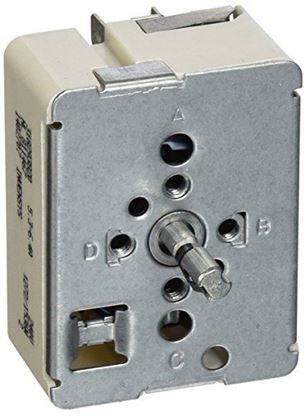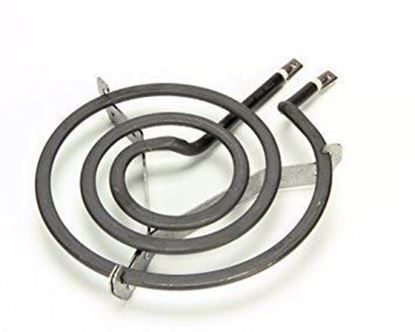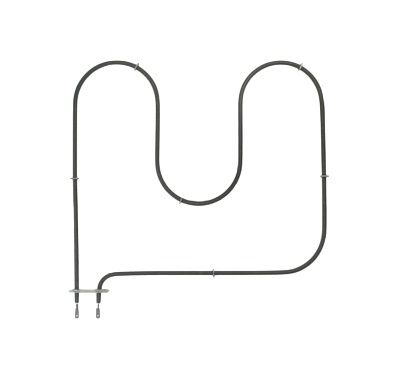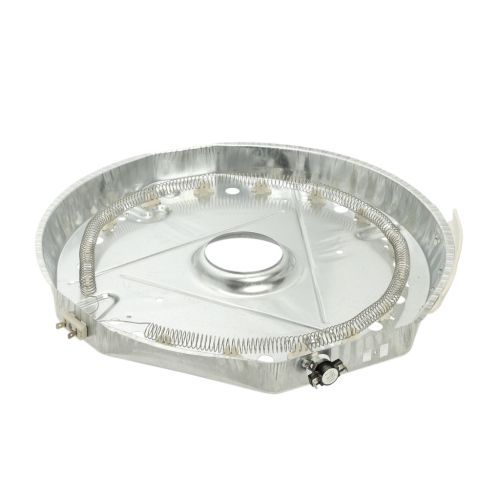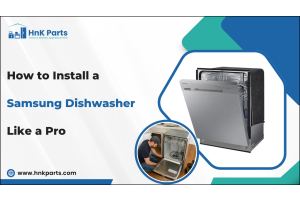
How to Replace Range Heating Element: A Quick & Dependable Guide
A properly functioning cooktop is the heart of any kitchen, enabling you to prepare delicious meals with ease. At the core of your electric stove's performance lies the electric stove heating element. When this vital component malfunctions, it can quickly turn meal preparation into a frustrating ordeal, leading to uneven cooking and extended cooking times. Understanding when and why to consider a heater element replacement is crucial for maintaining a functional and efficient kitchen. This guide will walk you through the process of how to replace heating element in your range, ensuring you have a quick and dependable solution to get your cooktop back in top shape. We'll cover everything from identifying the problem to choosing the right universal heating element and, ultimately, how to install a new cooktop heating element safely and effectively.
What is a Range Heating Element?
A range heating element is the part of your electric stove that generates heat. These elements are typically made of a coiled resistive metal that glows red when electricity passes through it, converting electrical energy into thermal energy. This heat is then transferred to your cookware, allowing you to cook food. There are different types of range burner element designs, but they all serve the same fundamental purpose: to provide consistent and controllable heat for cooking.
Signs Your Range Heating Element Needs Replacement
Recognizing the signs of a failing electric stove heating element is the first step toward a successful heater element replacement. Here are some common indicators that your cooktop heating element may need to be replaced:
|
Sign |
Description |
|
Inconsistent heating |
|
|
Physical damage or warping |
|
|
Burn marks or failure to glow |
|
|
Partial glowing |
|
Whirlpool Microwave Oven Parts Issues: Here's How to Troubleshoot
Tools & Safety Tips Before You Start
Before you attempt to replace heating element, it’s crucial to gather the necessary tools and prioritize safety. This will ensure a smooth and safe heater element replacement process.
-
Screwdriver: A Phillips head or flathead screwdriver will be needed to remove any screws securing the range burner element or the stove's back panel.
-
Multimeter: While not always strictly necessary, a multimeter can be very useful for testing continuity and confirming if the electric stove heating element is truly faulty.
-
Gloves: Always wear work gloves to protect your hands from sharp edges or heat.
Safety precautions
-
Always unplug your electric stove from the power outlet before you begin any work on it. Even if the element is turned off, residual electricity can be dangerous.
-
If you’ve recently used your stove, allow ample time for the range heating element to cool down completely. Touching a hot element can cause severe burns.
-
Refer to your stove's owner's manual for specific instructions and warnings related to your model. This is especially important for specific brands, like if you are working with a Bosch heating element.
Step-by-Step Guide: How to Replace Heating Element
Once you've assessed the problem and gathered your tools, it's time to learn how to replace heating element in your electric stove. This step-by-step guide will help you through the heater element replacement process.
Step 1: Disconnect power
-
Locate the power cord of your electric stove and unplug it from the wall outlet. If your stove is hardwired, you will need to turn off the corresponding circuit breaker in your home's electrical panel. Double-check that the power is off before proceeding with the cooktop heating element replacement.
Step 2: Remove faulty range burner element
-
Gently lift the electric stove heating element from its receptacle. There are usually two prongs on the element that plug into a terminal block. Wiggle the element gently while pulling it upwards. Be careful not to bend the prongs or damage the terminal block.
-
You may need to unscrew a few retaining screws around the element. Once the screws are removed, the element should lift out. Some models may require you to access the underside of the cooktop by lifting the entire cooktop surface or removing a back panel.
Step 3: Match with heating element
-
If you have a specific brand of stove, such as a Bosch, it's often best to look for a genuine Bosch heating element or a compatible part specifically designed for Bosch appliances. These are engineered to fit perfectly and perform optimally with your specific model.
-
For many older or more common stove models, a universal heating element can be a cost-effective and readily available option. These are designed to be compatible with a wide range of electric stoves. When choosing a universal heating element, pay close attention to the wattage and diameter to ensure it matches your old range heating element. An incorrectly sized or powered element can lead to poor performance or even damage your stove.
Step 4: Install new heater element replacement
-
Align the two prongs of the new cooktop heating element with the holes in the terminal block and push them firmly into place until they are fully seated. Ensure the element is level and secure.
-
Carefully place the new range heating element into its designated spot. Reconnect the wires exactly as they were on the old element. If you took a picture or made a diagram in Step 2, this would be very helpful. Secure the element by reinstalling any retaining screws that you removed earlier.
Step 5: Test the cooktop heating element
-
Plug your electric stove back into the power outlet or switch the circuit breaker back on.
-
Turn on the newly installed electric stove heating element to a medium or high setting.
-
Observe the element. It should begin to glow uniformly and quickly. If it heats up properly and evenly, you have completed the cooktop heating element replacement.
Choosing the Right Replacement Element
The choice between a brand-specific and a universal heating element often comes down to cost, availability, and the specific needs of your stove. Difference between brand-specific and universal heating elements
-
Brand-specific: As the name suggests, these elements are manufactured by or for a specific brand of stove, like a Bosch heating element. They are designed to fit perfectly and are guaranteed to be compatible with your model.
-
Universal heating element: These are aftermarket parts designed to be compatible with a wide array of stove brands and models. They are typically more affordable and widely available. However, fit and performance can sometimes be less precise than brand-specific parts. When selecting a universal heating element, careful matching of wattage, voltage, and dimensions is crucial to ensure proper operation and safety.
Maintenance Tips for Range Heating Element Longevity
Proper maintenance can significantly extend the life of your electric stove heating element and reduce the need for frequent heater element replacement.
-
Avoid spills on elements: Sugary liquids, in particular, can crystallize and burn onto the element, creating hot spots and eventually leading to failure. Always be careful when cooking and clean up spills immediately after the element has cooled down.
-
Regular inspection and early heater element replacement: Periodically inspect your range heating element for any of the signs of wear and tear mentioned earlier, such as warping, cracks, or discoloration. Addressing issues early can prevent them from escalating into more significant problems. If you notice any minor issues, it’s often more cost-effective to perform an early heater element replacement rather than waiting for the element to completely fail.
Toaster Oven Cleaning Made Easy: Step-by-Step Guide
Replacing a range heating element might seem like a daunting task, but as this guide demonstrates, it's a straightforward process that most homeowners can tackle with confidence. By understanding the signs of a failing electric stove heating element, gathering the right tools, and following a few essential safety precautions, you can successfully perform a heater element replacement and restore your cooktop's functionality. HnKParts is the one-stop shop for all your home appliance needs. Our extensive inventory of appliance parts includes Stove & Oven Replacement Parts from top-selling manufacturers at competitive prices.
FAQs
Can a faulty heating element trip the breaker?
Yes, a shorted electric stove heating element can cause the circuit breaker to trip due to excessive current draw or grounding issues.
Are infrared or induction cooktops easier to maintain than traditional heating elements?
Yes, induction and infrared cooktops are typically easier to clean and maintain since they don't use exposed range burner elements and have flat, smooth surfaces.


